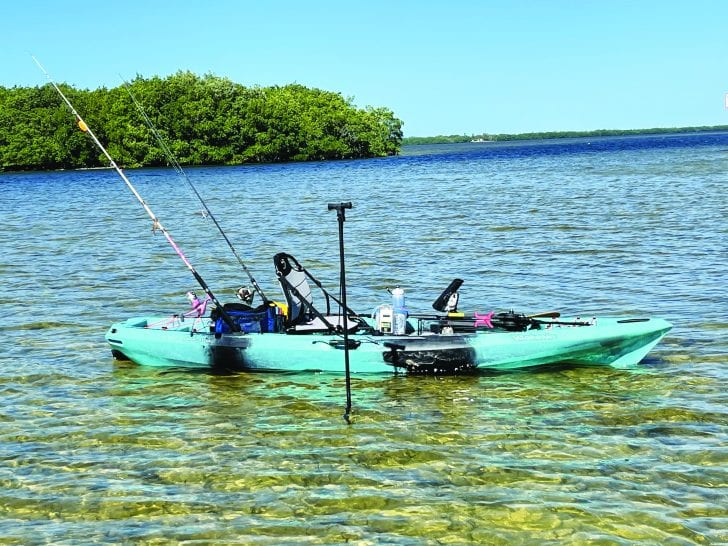Dan Carns
Keeping your kayak in the best possible location while fishing is a super important technique that may seem simple, but requires some planning and practice. Sure, on a super calm day with no wind and no moving tide it may be as simple as tossing your anchor overboard and your good to go but weather and tide play big roles most days! There are several types of kayak anchors, the most common is the grappling anchor that comes in various weights and I recommend at least a 2.5 lbs. up to 5 lbs. This particular anchor needs to be deployed by engaging the locking ring so when I’m using mine I simply leave it in the locked position and store it so it’s handy on my rig. Another style of anchoring that has become popular, especially in shallow water environments like the coastal estuaries of Florida, is the stick-it pin. This is typically a T bar shaped fiberglass pole with a sharpened end and varies in length from 4 ft. to as tall as 10ft! Some guys are using this same pole for anchoring, as well as poling through shallow flats while standing on their kayaks. Power Pole has now introduced a Micro Power Pole that mounts to the rear transom and can be remotely operated. The only real problem with this is you only have one anchor point so your kayak will position itself bow away from the wind or tide and may leave you in an awkward position to fish.

I’ve recently began fishing out of the new fin-drive kayak from Vanhunks called the Mahi-Mahi and it has changed my anchoring habits tremendously as I’m now able to power control my kayak especially in rough conditions. As I approach my target area I can use the peddle drive system to keep a preferred location by simply using small peddle stokes and the rudder to keep position. This peddle drive system also allows me to continue to fish the entire time as I no longer have to hold a paddle to move!
Of course, catching fish is the goal but practicing this technique will increase your catch!
Get Out There-It’s A Wild World!
Fishman Dan
